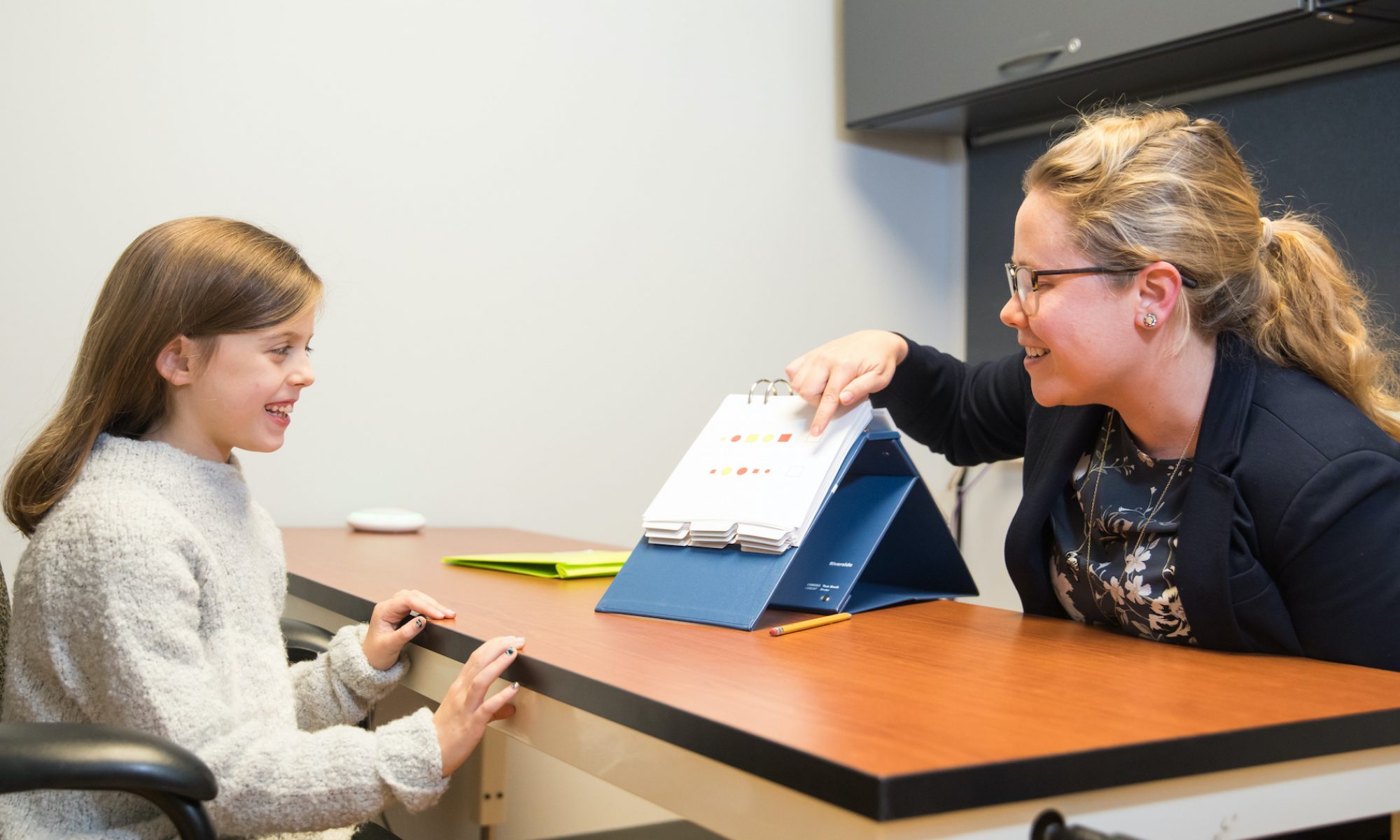Please click the titles of linked papers to either view an open-access version of the paper or download a PDF file. PDFs are provided as a courtesy for your individual use only.
You can also view Dr. Elizabeth Norton’s profile on Google Scholar or ResearchGate.
^Indicates student/postdoc authors from our lab.
^McWeeny, S. & Norton, E. S. (2024). Auditory processing and reading disability: a systematic review and meta-analysis. Scientific Studies of Reading, 28(2), 167-189. OSF Preregistration.
Neuroscience and Biobehavioral Reviews, 153, 105391.
Roberts, M. Y., Sone, B., Jones, M., Standley, M., Conner, T., Lee, E. D., Norton, E. S., Roman, J., Speights , M., Young, R., & Weisleder, A. (2023). What the evidence does (and does not) show for the Centers for Disease Control and Prevention child development milestones: an illustrative example using expressive vocabulary. Journal of Speech, Language, and Hearing Research.
Mues, M., Zuk, J., Norton, E. S. , Gabrieli, J., Hogan, T. P., & Gaab, N. (2023). Preliteracy skills mediate the relation between early speech sound production abilities and subsequent reading outcomes. Journal of Speech, Language, and Hearing Research, 66(8), 2766-2782.
^McWeeny, S., ^Choi, S. J., LaTourette, A., ^Choe, J., Roberts, M. Y., & Norton, E. S. (2022). Rapid automatized naming as a kindergarten predictor of future reading in English: A meta-analysis. Reading Research Quarterly.
Krok, W., Norton, E. S., ^Harriott, E., Buccheit, M. K., Wakschlag, L. S., & Hadley, P. (2022). Using animated action scenes to remotely assess sentence diversity in toddlers. Topics in Language Disorders, 42(2), 156-172.
Norton, E. S., ^Manning, B. L., ^Harriott, E., ^Nikolaeva, J., ^Nyabingi, O., ^Page, J., MacNeill, L., Krogh-Jespersen, S., & Wakschlag, L. (2022). Social EEG: A novel approach to studying brain-behavior links and brain-to-brain synchrony during naturalistic toddler-parent interactions. Developmental Psychobiology, 64(3), e2240.
Norton, E. S., MacNeill, L., ^Harriott, E. M., Allen, N., Krogh-Jespersen, S., Smyser, C. D., Rogers, C., Smyser, T., Luby, J., & Wakschlag, L. S. (2021, accepted). EEG/ERP as a pragmatic method to expand the reach of infant-toddler neuroimaging in HBCD: Promises and challenges. Developmental Cognitive Neuroscience, 51, 100988.
Krogh-Jespersen, S., MacNeill, L., Anderson, E. L., Stroup, H. E., ^Harriott, E. M., ^Gut, E., ^Blum, A., Fareedi, E., ^Fredian, K. M., ^Wert, S., Wakschlag, L. S., & Norton, E. S. (2022). Disruption leads to methodological and analytic innovation in developmental sciences: Recommendations for remote administration and dealing with messy data. Frontiers in Psychology, 12, 732312.
^Nielsen, A., Wakschlag, L. S., & Norton, E. S. (2021). Linking irritability and functional brain networks: a case for expanding consideration of development and environment in RDoC. Neuroscience and Biobehavioral Reviews, 129, 231-244.
Woodruff Carr, K. L., Perszyk, D. R., Norton, E. S., Voss, J. L., Poeppel, D., & Waxman, S. R. (2021, epub ahead of print). Developmental changes in auditory-evoked alpha activity underlie the increasing precision with which infants link language and cognition. Developmental Science, 24(6), e13121.
Damme, K. S. F., Norton, E. S., Briggs-Gowan, M. J., Wakschlag, L. S., & Mittal, V. A. (in press, 2021). Developmental patterning of irritability enhances prediction of psychopathology in pre-adolescence: Improving RDoC with developmental science. Journal of Psychopathology and Clinical Science, 131(6), 556–566.
Norton, E. S., Beach, S. D., Eddy, M. D., ^McWeeny, S., Ozernov-Palchik, O., Gaab, N., & Gabrieli, J. D. E., (2021). ERP mismatch negativity amplitude and asymmetry reflect phonological and rapid automatized naming skills in English-speaking kindergartners. Frontiers in Human Neuroscience, 15.
MacNeill, L. A., Allen, N., Poleon, R., Vargas. T., Osborne, K. J., Damme, K., Barch, D., Krogh-Jespersen, S., Norton, E. S., Smyser, C. D., Rogers, C. E., Luby, J. L., Mittal, V. A. & Wakschlag, L. S. (2021). Translating RDoC to real-world impact in developmental psychopathology: A neurodevelopmental framework for application of mental health risk calculators. Development and Psychopathology, 33, 1665–1684.
Norton, E. S. (2020). What educators need to know about Rapid Automatized Naming (RAN). Learning Difficulties Australia Bulletin, 52(1), 25-28.
^Manning, B. L., ^Harpole, A., ^Harriott, E., ^Postolowicz, K., & Norton, E. S. (2020). Taking language samples home: Feasibility, reliability and validity of child language samples conducted remotely with video chat versus in-person. Journal of Speech, Language, and Hearing Research.
^McWeeny, S., & Norton, E. S. (2020). Understanding event related potentials (ERPs) in clinical and basic and language and communication disorders research: a tutorial. International Journal of Language and Communication Disorders, 55(4), 445-457. https://doi.org/10.1111/1460-6984.12535
^Manning, B. L., Roberts, M. Y., Estabrook, R., Petitclerc, A., Burns, J., Briggs-Gowan, M., Wakschlag, L. S., & Norton, E. S. (2019). Relations between toddler expressive language and temper tantrums in a community sample. Journal of Applied Developmental Psychology, 65, 101070. https://doi.org/10.1016/j.appdev.2019.101070
Nayar, K., McKinney, W., Hogan, A., Martin, G., La Valle, C., Sharp, K., Berry-Kravis, E., Norton, E. S., Gordon, P., & Losh, M. (2019). Language processing skills linked to FMR1 variation: A study of gaze-language coordination during rapid automatized naming among women with the FMR1 premutation. PLoS One,14(7), e0219924. https://doi.org/10.1371/journal.pone.0219924
Centanni, T.M.*, Norton, E. S.*, Park, A., Beach, S. D., Halverson, K., Gaab, N., & Gabrieli, J.D. (2019). Disrupted left fusiform response to print in kindergartners is associated with subsequent reading impairment. NeuroImage: Clinical, 22, 101715. https://doi.org/10.1016/j.nicl.2019.101715 (*Co-first authors).
Wakschlag, L. S., Roberts, M. Y., Norton, E. S.,Marino, B. S., Losh, M., Mittal, V., Allen, B., Ferrie, J., Flynn, R., & Davis, M. (2019). Future directions for earlier identification and prevention of mental health problems: Aligning developmental clinical and population science towards a healthier, earlier roadmap. Journal of Clinical Child and Adolescent Psychology, 48(3), 539-554. https://doi.org/10.1080/15374416.2018.1561296
Ozernov-Palchik, O., Norton, E. S., Wang, Y., Beach, S. D., Zuk, J., Wolf, M., Gabrieli, J. D. E., & Gaab, N. (2018). The relationship between socioeconomic status and white matter structure in pre-reading children: A longitudinal investigation. Human Brain Mapping. https://doi.org/10.1002/hbm.24407
Nayar, K., Gordon, P., Martin, G., Hogan-Brown, A., La Valle, C., McKinney, W., Lee, M., Norton, E. S.,& Losh, M. (2018). Links between looking and speaking in autism and first-degree relatives: Insights into the expression of genetic liability to autism. Molecular Autism, 9, 51. https://doi.org/10.1186/s13229-018-0233-5
Roberts, M. Y., Curtis, P., Estabrook, R., Norton, E. S., Davis, M., Burns, J., Briggs-Gowan, M., Petitclerc, A., & Wakschlag, L. S. (2018). Talking tots and the terrible twos: Generating a developmental understanding of the relationships between early language and disruptive behavior in toddlers. Journal of Developmental & Behavioral Pediatrics, 39(9), 709-714.https://doi.org/10.1097/DBP.0000000000000615
Deveney, C. M., Briggs-Gowan, M. J., Pagliaccio, D., Estabrook, C. R., Zobel, E., Burns, J. L., Norton, E. S.,Pine, D. S., Brotman, M. A., Leibenluft, E., & Wakschlag, L. S. (2018). Temporally sensitive neural measures of inhibition in preschool children with varying irritability symptoms. Developmental Psychobiology, 61, 216–227. https://doi.org/10.1002/dev.21792
Centanni, T.M.*, Norton, E. S.*, Park, A., Beach, S. D., Halverson, K. K., Gaab, N., & Gabrieli, J. D. E. (2018). Letter selectivity in fusiform gyrus predicts letter knowledge and word reading in kindergarten children. Developmental Science, e2658. doi: 10.1111/desc.12658 (*Co-first authors)
Ozernov-Palchik, O., Norton, E. S., Sideridis, G., Beach, S. D., Gabrieli, J. D. E., & Gaab, N. (2017). Early-reading profiles of children at kindergarten and longitudinally: Implications for early screening and theories of reading. Developmental Science, 20(5). doi: 10.1111/desc.12471
Saygin, Z. M., Osher, D., Norton, E. S., Youssoufian, D., Beach, S. D., Feather, J., Gaab, N., Gabrieli, J. D. E., & Kanwisher, N. (2016). Connectivity precedes function in the development of the visual word form area. Nature Neuroscience. doi:10.1038/nn.4354
Vandermosten, M., Hoeft, F., & Norton, E. S. (2016). Integrating MRI brain imaging studies of pre-reading children with current theories of developmental dyslexia: A review and quantitative meta-analysis. Current Opinion in Behavioral Science, 10, 155-161. (†Senior/corresponding author)
Norton, E. S., Beach, S. D., & Gabrieli, J. D. E. (2015). Neurobiology of dyslexia. Current Opinion in Neurobiology, 30, 73-78.
Norton, E. S., Black, J. M., Stanley, L. M., Tanaka, H., Gabrieli, J. D. E., Sawyer, C., & Hoeft, F. (2014). Functional neuroanatomical evidence for the double-deficit hypothesis of developmental dyslexia. Neuropsychologia, 61, 235-246.
Saygin, Z. M.*, Norton, E. S. *, Osher, D., Beach, S. D., Cyr, A. B., Ozernov-Palchik, O., Yendiki, A., Fischl, B., Gaab, N., & Gabrieli, J. D. E. (2013). Tracking the roots of reading ability: White matter volume and integrity correlate with phonological awareness in pre- and early-reading kindergarten children. The Journal of Neuroscience, 33(33), 13251-13258. (*Co-first authors)
Norton, E. S., & Wolf, M. (2012). Rapid automatized naming (RAN) and reading fluency: Implications for understanding and treatment of reading disabilities. Annual Review of Psychology, 63, 427-452.
Gabrieli, J. D. E. & Norton, E. S. (2012). Reading abilities: Importance of visual-spatial attention. Current Biology, 22(9), R298-299.
Kovelman, I., Norton, E. S., Gaab, N., Christodoulou, J., Triantafyllou, C., Lieberman, D. A., Lymberis, J., Wolf, M., Whitfield-Gabrieli, S., & Gabrieli, J. D. E. (2011). Brain basis of phonological awareness for spoken language in children and its disruption in dyslexia. Cerebral Cortex, 22(4), 754-764.
Wolf, M., Barzillai, M., Gottwald, S., Miller, L., Spencer, K., Norton, E., Lovett, M., & Morris, R. (2009). The RAVE-O intervention: Connecting neuroscience to the classroom. Mind, Brain, and Education, 3(2), 84-93.
Norton, E. S., Kovelman, I., & Petitto, L. A. (2007). Are there separate neural systems for spelling? New insights into the role of rules and memory in spelling from fMRI. Mind, Brain, and Education, 1(1), 48-59.

